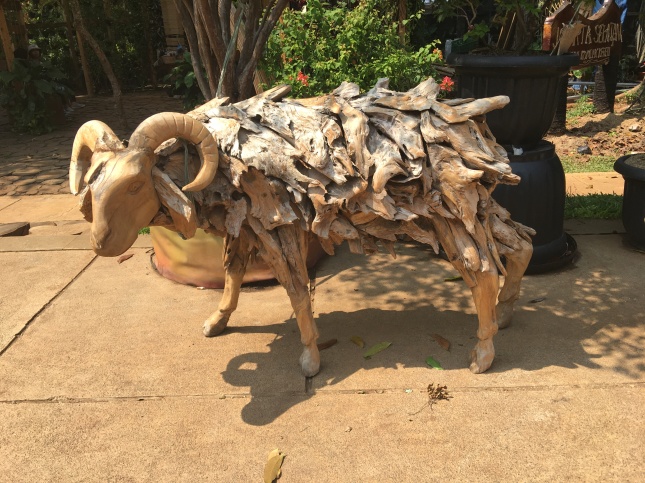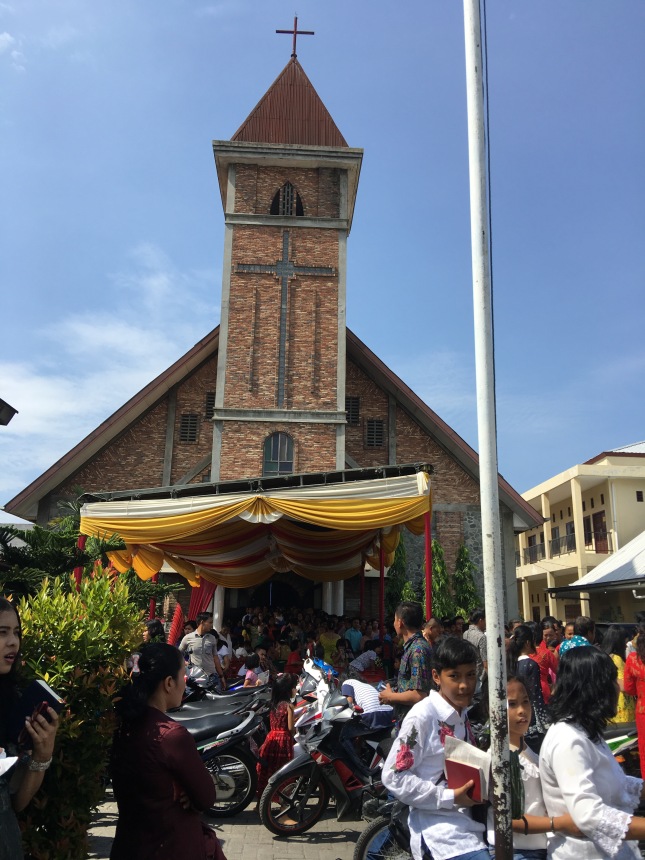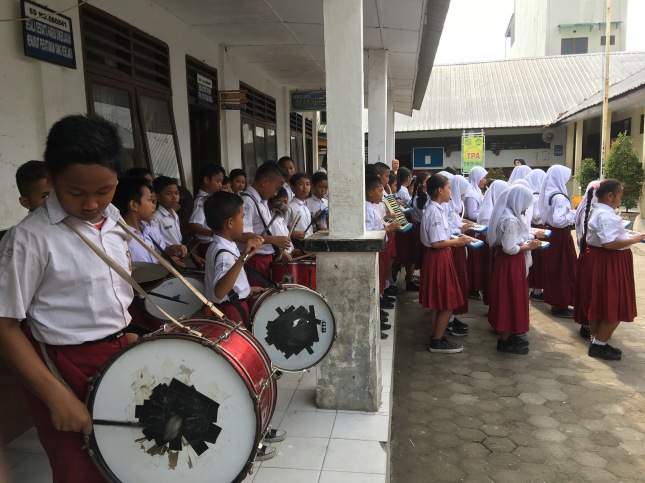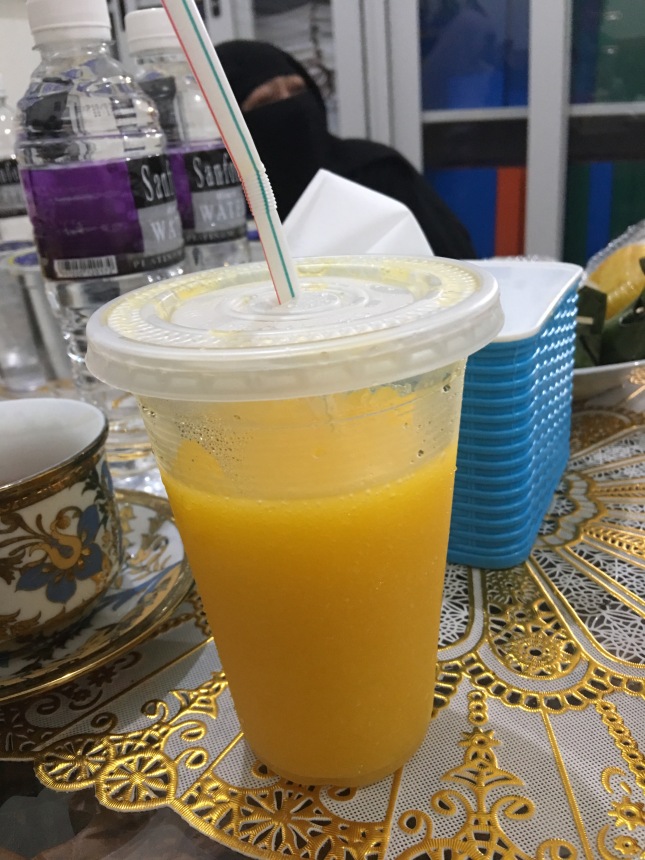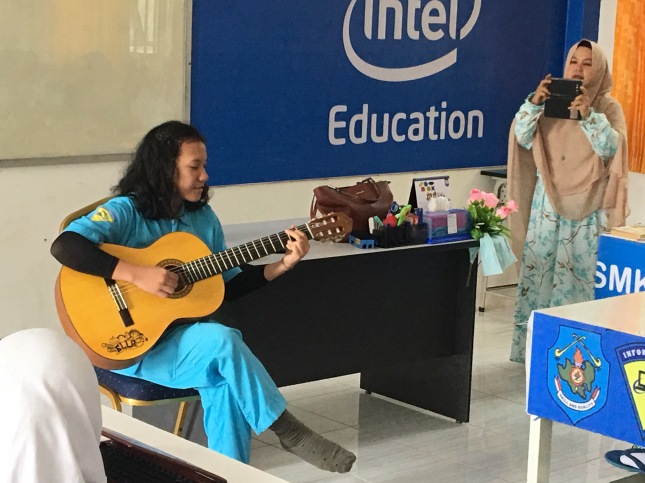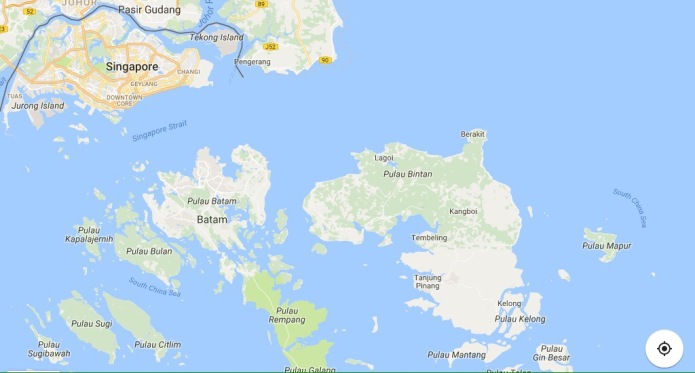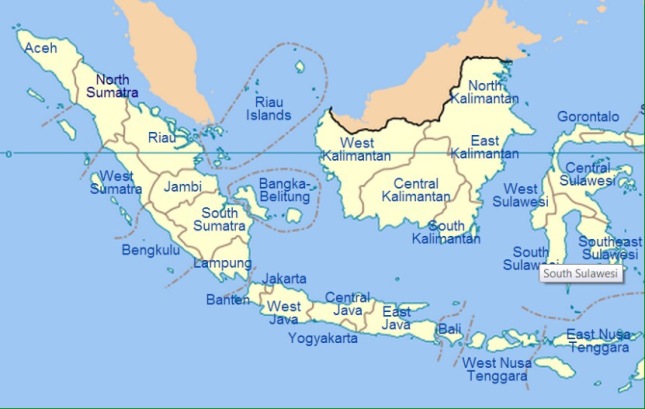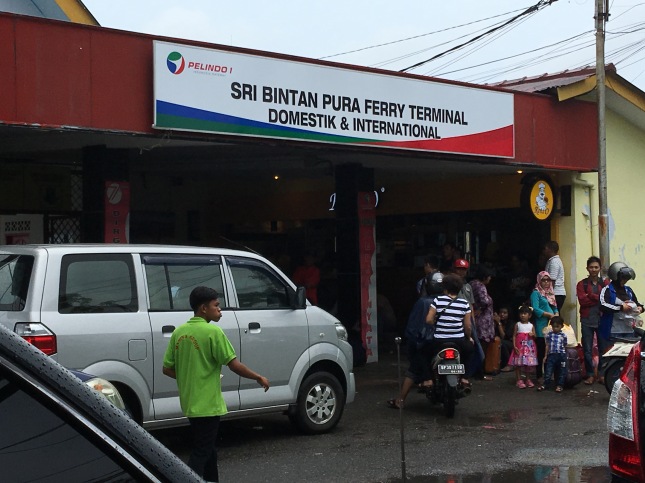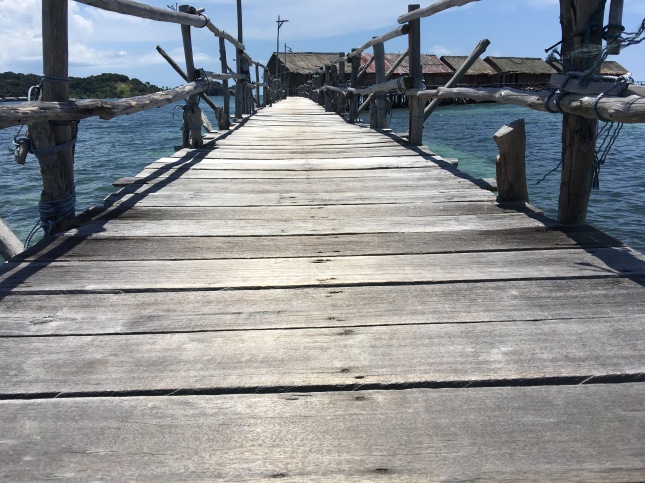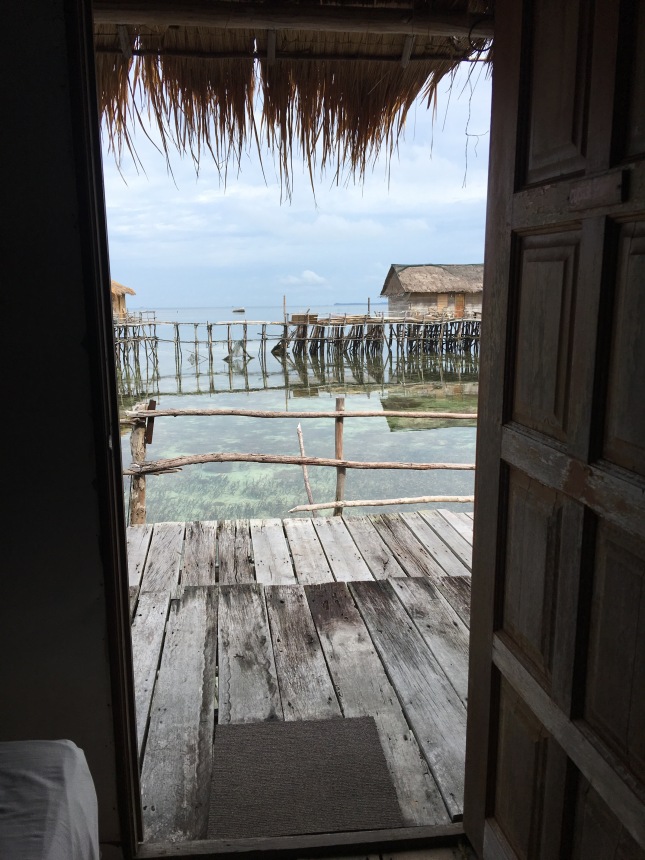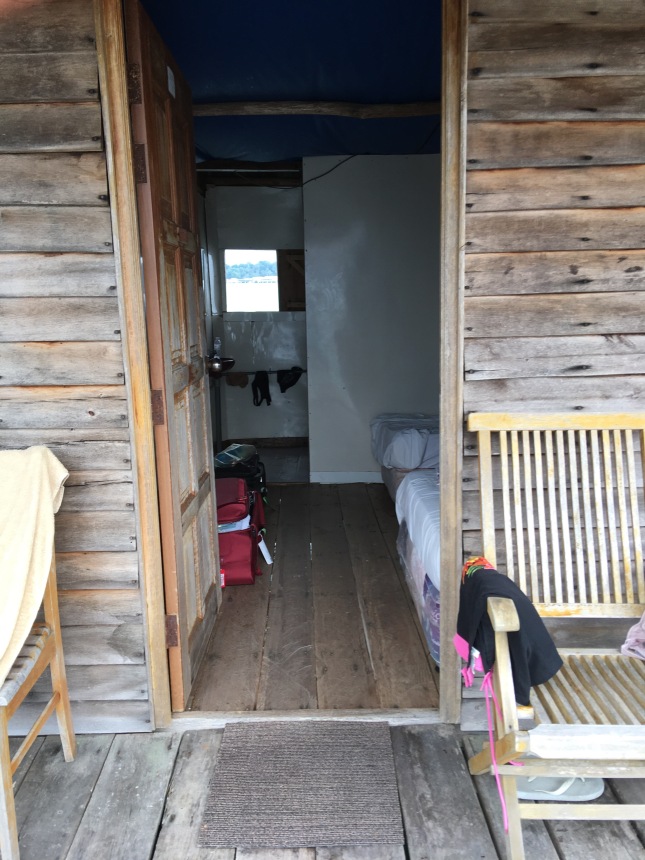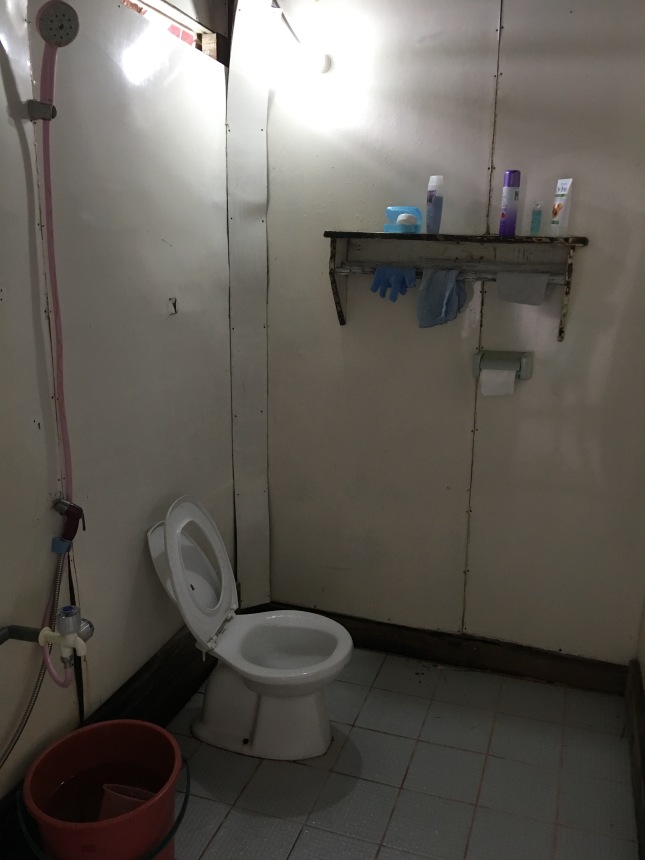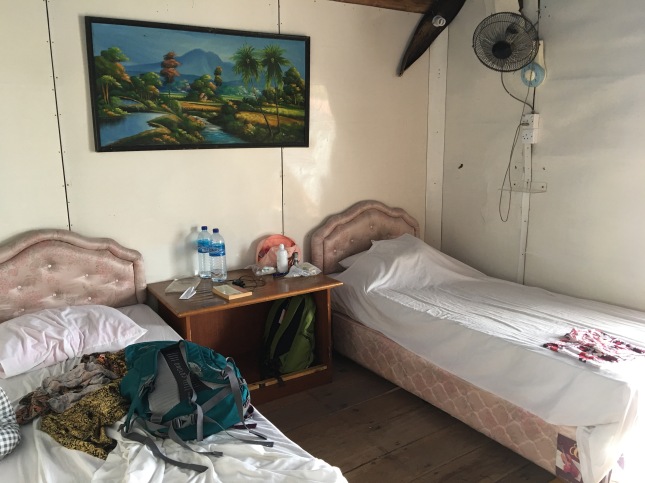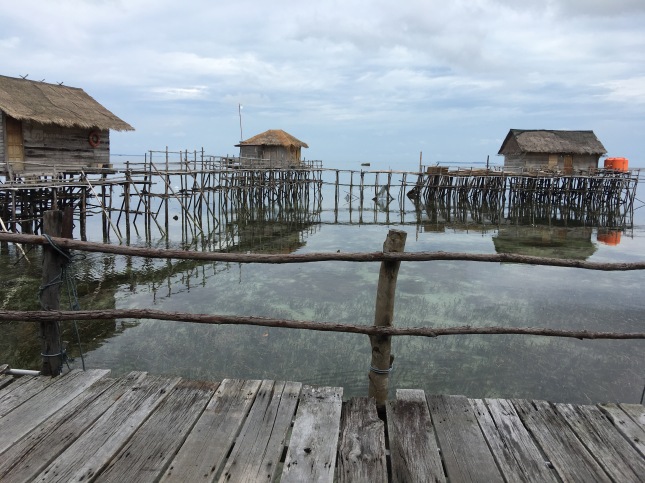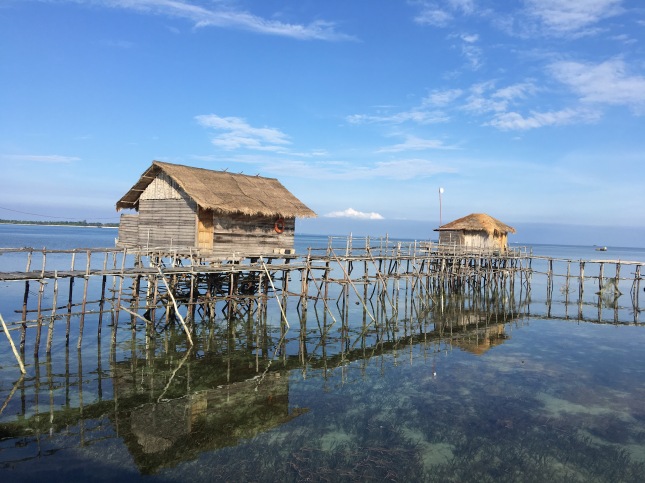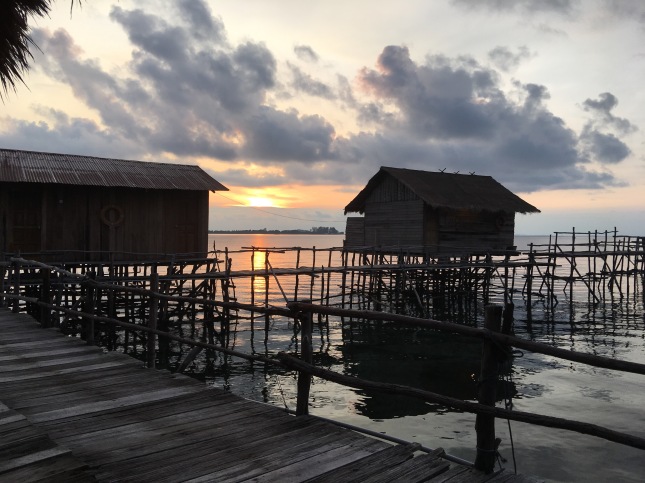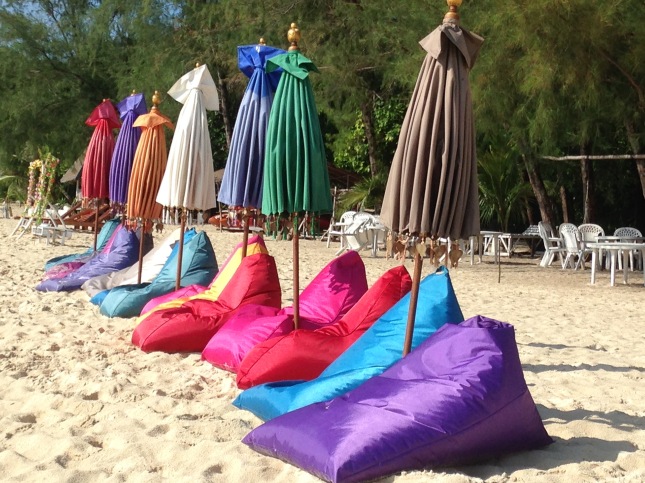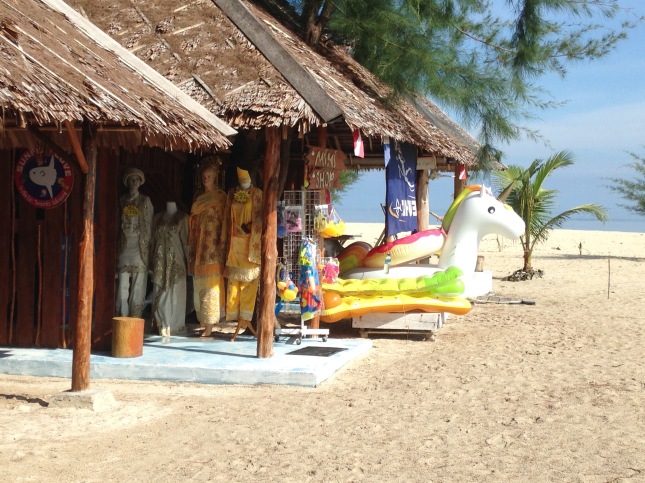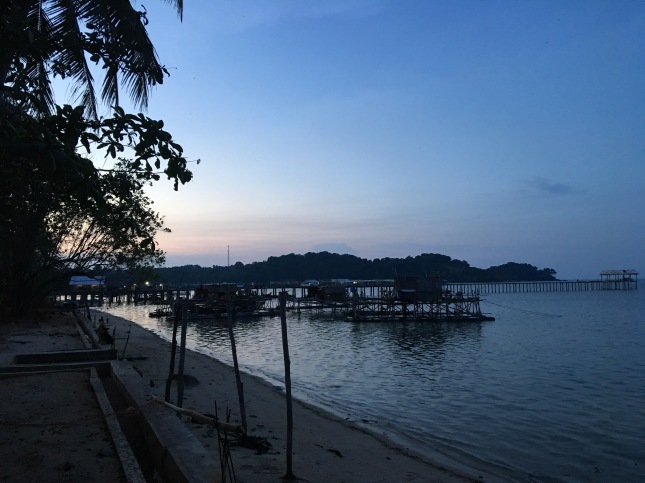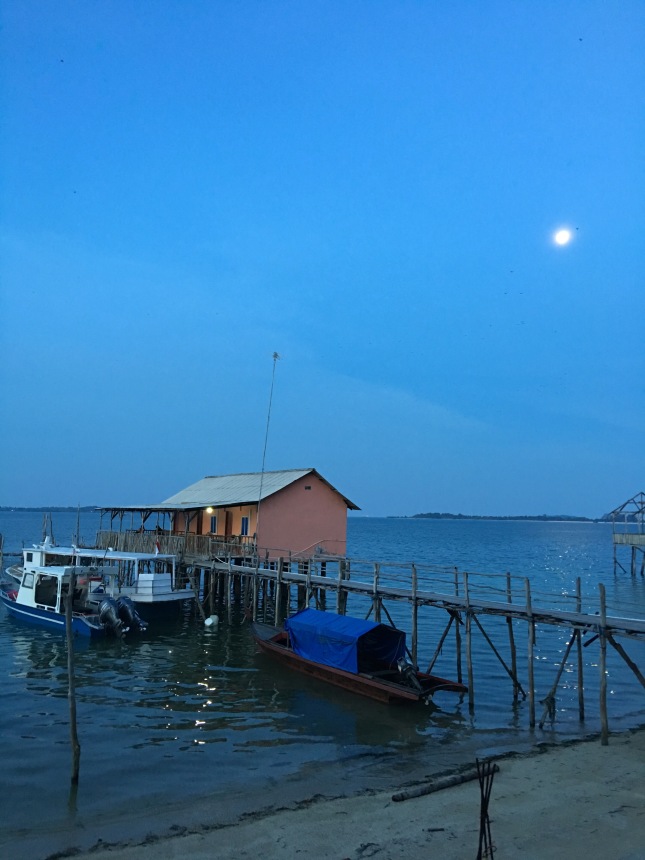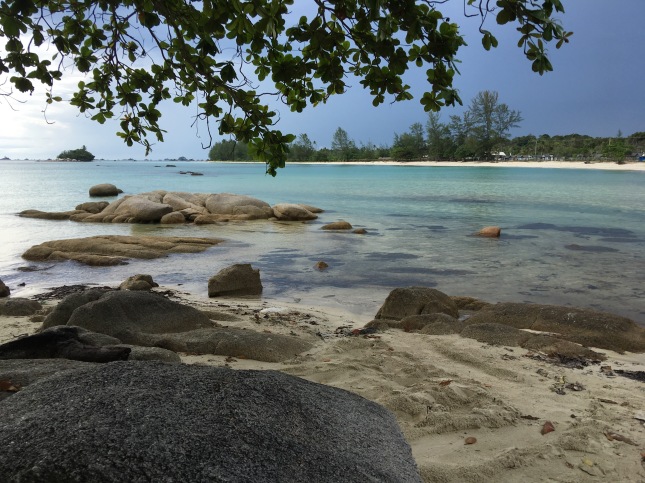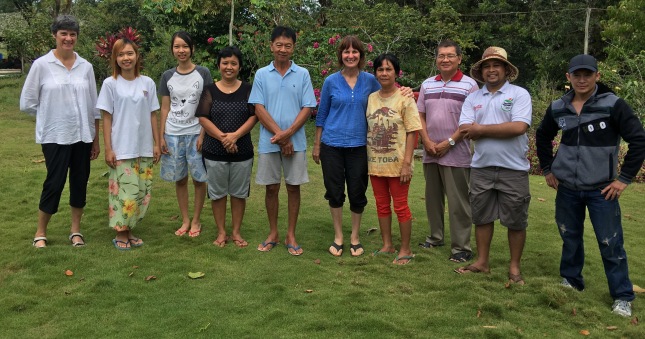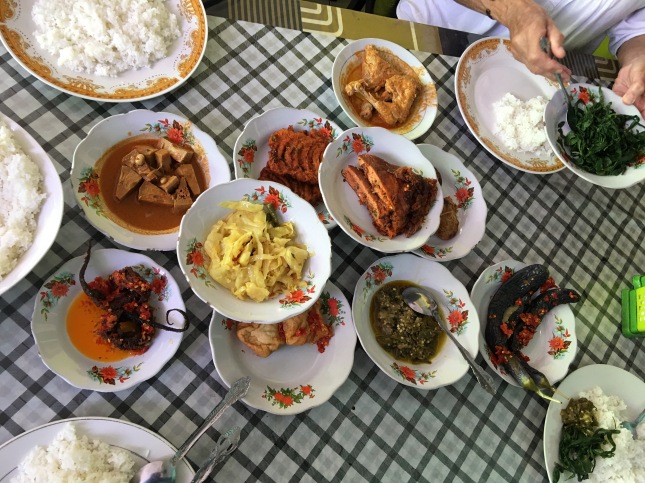My three days with my friend Kadek in her village were, as always, a highlight of my stay in Bali. She was delighted that my stay coincided with a family wedding to be held in a village close to Balian Beach.
Attending the wedding began with me agreeing to do something I have long vowed and declared I would never, ever do. I rode pillion, side saddle on the back of a motorbike along the busy Gilimanuk-Denpasar road without a helmet! I spent most of the ride torn between enjoying the view and remonstrating with myself how dangerous it was and reminding myself that my insurance would not cover any mishap. We had actually planned to catch a bus to the wedding but after waiting by the side of the road for half an hour, we soon realised that due to the many weddings being held that day, the majority of buses were privately chartered. So, Kadek reluctantly suggested the five of us ride by motorbike. I hopped on the back of Kadeks’ husbands’ bike because he is a far more confident driver than Kadeks’ daughter Putu, and considering I can count the number of times I have ridden pillion side saddle on the back of a motorbike on one hand, it was a sensible decision for me to travel with Ketut. (sidenote; The only times I have ever ridden side saddle were in Ternate with the amazing Bu Esty). Are you wondering why I am riding side saddle? A wedding is an extremely important Hindu ceremony and required me to wear pakaian adat; a kebaya (shirt), a salendang (a sash tied around the waist) and a sarong wrapped firmly around the lower torso and legs which meant there was no way I could swing my legs over the bike.
Travelling side saddle is tricky. Sitting perpendicular to the road, evenly balancing my body weight with both feet, one on top of the other, on just one stirrup and my right arm gingerly holding Ketut around his stomach was quite nerve wracking at first and took some getting used to. There was also a lot of trust in Ketut’s driving skills, especially when turning left around corners and having to literally lean backwards with the bike! However overall, I should confess, I absolutely loved the ride. Ketut took it slowly because he had not only me on the back, but their young 10 year old son in front of him. Ade was part squatting on the bike platform and part sitting on the seat in front of Ketut with his head resting on the handle bars! Though I couldn’t see Ade at all, I know that he would have been grinning from ear to ear! Ade adores motor bikes! Putu & Kadek followed behind us. Kadek rode side saddle too while holding on her lap a large plastic bag containing a ceremonial bowl containing small bags of sugar, coffee and other useful items for the family hosting the wedding. Resting on the top of the bowl covering the food, was a bright pink and yellow crochet doily.
The ride took about half an hour and by the time we arrived, I was grateful to stand up and stretch out. Strangely enough it was only my left hip that protested! However, what more than made up for any discomfort and concern I felt while riding was the constant flow of cool air. No matter what the actual temperature or humidity level, riding on a bike guarantees refreshing and pleasant breezes. Beautiful and always appreciated at this time of year!
As we approached the family’s house, it was clear to see which was hosting a wedding. Not only were there many vehicles parked out the front, but the eye catching entrance decoration was spectacular. 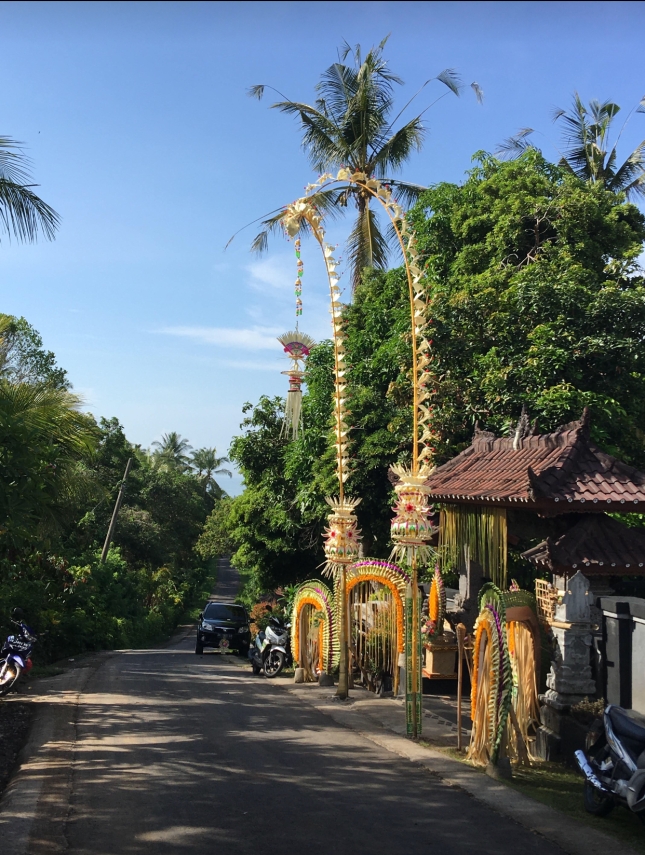 Kadek explained that the design and materials were top of the range and clearly demonstrated the huge amount of money that had been spent on the wedding. The family hosting the wedding is the grooms family and he is their only child.
Kadek explained that the design and materials were top of the range and clearly demonstrated the huge amount of money that had been spent on the wedding. The family hosting the wedding is the grooms family and he is their only child.
Once through the entrance, we stepped down the driveway and were greeted by family members who immediately relieved Kadek of her contribution. After answering the first of many questions about who I was, we continued down the steps/driveway to a foyer that had been extravagantly decorated with huge framed pre-wedding photos, 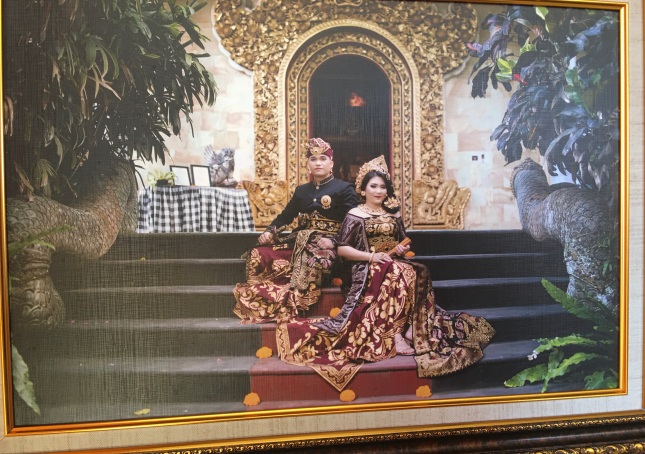 a wall covered in yellow and white curtains and placards with the wedding couples names. There was also a carved and painted sign with hooks to hang important details including the bride and groom’s names and the date.
a wall covered in yellow and white curtains and placards with the wedding couples names. There was also a carved and painted sign with hooks to hang important details including the bride and groom’s names and the date.
We were then ushered by another family member to the tables and chairs set up in an adjoining enormous marquee. We sat at a back table where behind us was an open bale in which the entire floor space was taken up with tables groaning under the weight of the food platters and bowls. More family members were busy here arranging the food, topping it up and ensuring everything that would be needed for lunch was available. As soon as we sat down, another family member came by and encouraged us all to help ourselves to the food and drink in the middle of the table. The food included crackers, tape (fermented cassava) in banana leaves, cake slices and tiny, tiny packets of peanuts. The drinks on offer were small bottles of water, red fanta & the inevitable cartons of es teh (iced tea).  A couple of minutes later, another member of the family offered us mini cups of ice cream. This was so welcome as it was very hot under the marquee. Kadek then noticed that Ketut’s immediate family were sitting together at a table behind us, so we upped and joined them. This move was doubly benefical in my opinion because we now sat at the back of marquee area overlooking the vast kebun, (garden). ‘Gardens’ generally consist of fruit trees, vegetables, livestock, herbs and spices for both home and commercial purposes. A large percentage of these ‘gardens’ were originally rice fields but with the rapidly dropping water levels in Bali, families are forced to change century old agricultural traditions to seek alternative crops for their land. A familiar story across the world! Being closer to the garden meant the chance of a breeze while we sat chatting and gossiping and the youngsters played on mobile phones.
A couple of minutes later, another member of the family offered us mini cups of ice cream. This was so welcome as it was very hot under the marquee. Kadek then noticed that Ketut’s immediate family were sitting together at a table behind us, so we upped and joined them. This move was doubly benefical in my opinion because we now sat at the back of marquee area overlooking the vast kebun, (garden). ‘Gardens’ generally consist of fruit trees, vegetables, livestock, herbs and spices for both home and commercial purposes. A large percentage of these ‘gardens’ were originally rice fields but with the rapidly dropping water levels in Bali, families are forced to change century old agricultural traditions to seek alternative crops for their land. A familiar story across the world! Being closer to the garden meant the chance of a breeze while we sat chatting and gossiping and the youngsters played on mobile phones.
Suddenly the groom appeared out of a nearby bedroom and walked through the tables to the front entrance. He must have had word that his bride was about to arrive. Kadek and I followed him a couple of minutes later and greeted them both before they headed to the foyer for the first round of offical photos.  The photographers choreographed, photographed and filmed loving romantic enactments with directions given not only for specific movement but also how, where and when they each had to look at each other (or not). Considering both the bride and groom were each wearing very heavy clothing, heavy enclosed headwear and thick makeup, I was consistently impressed with their cooperation. Anything the photographers suggested throughout the day was done compliantly and then as soon as the filming stopped, they would both quickly grab their hand held battery operated fans and wave them in front of their face with one hand and mop sweat with the other. By the end of the day, their clothing must have been dripping with perspiration!
The photographers choreographed, photographed and filmed loving romantic enactments with directions given not only for specific movement but also how, where and when they each had to look at each other (or not). Considering both the bride and groom were each wearing very heavy clothing, heavy enclosed headwear and thick makeup, I was consistently impressed with their cooperation. Anything the photographers suggested throughout the day was done compliantly and then as soon as the filming stopped, they would both quickly grab their hand held battery operated fans and wave them in front of their face with one hand and mop sweat with the other. By the end of the day, their clothing must have been dripping with perspiration!
Guests were then invited to help themselves to the food in the bale. Our table was one of the first to do so. We lined up and were handed a woven bamboo plate with a square of brown paper resting on top and a spoon and fork. From there, we made our way around the tables in the bale helping ourselves to a smorgasbord of traditional Balinese food. There were many pork dishes including tum, sate, pork crackling and soup. There were also several vegetable dishes and other accompaniments including my favourite fried ikan teri (tiny fish) & peanuts. There was certainly heaps to eat and absolutely no-one went hungry, although I’ve just realised that the only time I saw the groom eat was a mouthful of sate forced on him by his mother!! I remembered this because it was amusing watching him using his teeth to remove a piece of meat of the stick to avoid ruining his lipstick.
After enjoying our meal, we sat around for hours chatting, drinking and snacking waiting for the official ceremony to begin. We could hear the pemangku (priest) chanting and ringing his bell in the background. The bridal couple rarely got a chance to relax. They either circulated around the tables chatting with family or followed further instructions from the photographers whenever a new idea struck them.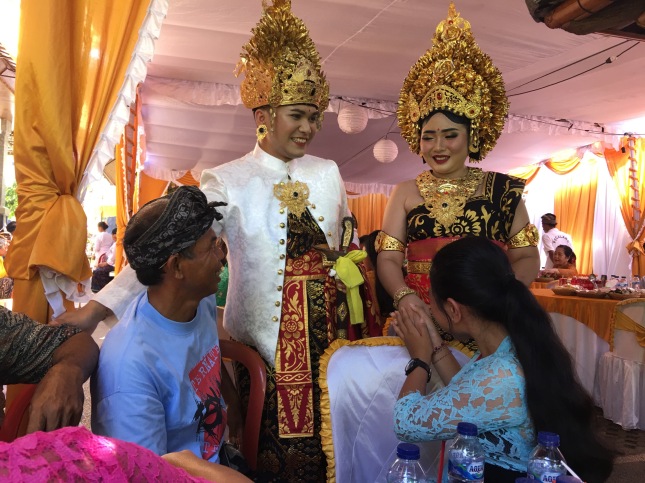
 When the official ceremony finally began, most people took no notice!! Kadek invited me to head down to the lawned area in front of the family temple where the priest was seated. He was dressed entirely in white but what impressed me the most was his very long matted hair trussed up neatly like a very long dreadlock yet still hung down past his waist.
When the official ceremony finally began, most people took no notice!! Kadek invited me to head down to the lawned area in front of the family temple where the priest was seated. He was dressed entirely in white but what impressed me the most was his very long matted hair trussed up neatly like a very long dreadlock yet still hung down past his waist.  While the priest was seated under a tree, the poor bridal couple stood out in the hot sun while white clad women led them through the beginning of the formal ceremony.
While the priest was seated under a tree, the poor bridal couple stood out in the hot sun while white clad women led them through the beginning of the formal ceremony.  Before being ushered up the steps into the family temple followed by parents and the photographers, the couple each had a sarong wrapped over their ceremonial clothes. I couldn’t imagine having another layer added and I was only wearing a cotton shirt and a single sarong! Kadek invited me to join them all in the family temple. I declined easily as the idea of squishing up with everyone in a limited space in the open sun was both unappealing and also felt intrusive. Thankfully, the bridal couple were quickly sheltered with an umbrella because on their behalf I felt faint at the idea of standing in the full sun wearing heavy brocade. At one time they were also seated for which they must have been grateful. They were also showered often with holy water which normally is very refreshing but I doubt it made much difference to them.
Before being ushered up the steps into the family temple followed by parents and the photographers, the couple each had a sarong wrapped over their ceremonial clothes. I couldn’t imagine having another layer added and I was only wearing a cotton shirt and a single sarong! Kadek invited me to join them all in the family temple. I declined easily as the idea of squishing up with everyone in a limited space in the open sun was both unappealing and also felt intrusive. Thankfully, the bridal couple were quickly sheltered with an umbrella because on their behalf I felt faint at the idea of standing in the full sun wearing heavy brocade. At one time they were also seated for which they must have been grateful. They were also showered often with holy water which normally is very refreshing but I doubt it made much difference to them.
When the temple part of the ceremony was finished, the couple came down the stairs and were handed a woven basket full of drinks and snacks usually found in a warung.  A cry went up, “Ayo, belanja!” (Come on everyone, lets shop!!) and suddenly they were inundated with well wishers choosing something from the bowl and replacing it with money. I gave them Rp10,000 for a sachet of Kapal Api coffee which had everyone hooting with laughter that I paid so much!!
A cry went up, “Ayo, belanja!” (Come on everyone, lets shop!!) and suddenly they were inundated with well wishers choosing something from the bowl and replacing it with money. I gave them Rp10,000 for a sachet of Kapal Api coffee which had everyone hooting with laughter that I paid so much!!
The couple were then guided to the main family bale where the priest was now seated. 
At this point, guests realised that rain was imminent. We had been watching a huge grey black cloud mass move slowly towards us all afternoon. Ketut and Kadek decided we needed to head home quickly to avoid the rain. None of us was keen to ride home in the pouring rain with only two raincoats. We quickly made our goodbyes, and dashed outside to grab the bikes where many other guests had exactly the same idea. However, the rain began as we seated ourselves once again on the bikes. We dashed down the road heading to the main road hoping to stay in front of the rain but this quickly became an unrealistic goal. At the main road, Kadek and I agreed we’d prefer to catch a bus and I think we all had our fingers crossed that one would come along. We stood for quite a while under a huge frangipani tree that largely sheltered us, however for me, the gentle rain that fell through the branches was beautifully refreshing and just what I needed. Much to everyone’s’ relief, a bus eventually came along and Kadek, Ade and I clambered on board leaving Putu and Ketut to ride the two bikes back without having to share their raincoats!
It was still raining when we reached the turn off, so we sat at a friends warung admiring the work the husband has done to single handedly turn a bare block into a business including a selection of seated areas and children’s swings. Their warung is right on the main road and the block goes all the way back to the beach, so I am guessing the afternoon breezes would be gorgeous for customers choosing to break their travels there for a quick dish of noodles and a cup of black sweet tea.
It was close to 3pm when we finally pulled into the driveway at home. We were all so exhausted, that after a quick mandi (wash), we all sat down and collapsed! Well almost everyone…. Poor Ketut had to head off and tend to their cow!


 I then tried to channel Blaine Ray by asking if they thought Elsa was happy in Rancaekek. When students said that she was, I negated it and told the class that she wasn’t happy because she had a problem! After circling this, I asked for ideas as to what her problem could be. As someone had said while initially discussing Rancaekek that it was a place that often floods, I fully expected to hear this offered as a reason, yet surprisingly, it was not offered at all. The suggestion that had the best potential was that she was too hot. When I asked what could she do to fix her problem, the suggestions included buying an umbrella, installing an air-conditioner, or buying es campur. As I had mentioned earlier that I really love this mixed ice dish, the students all laughed at this clever suggestion and it thus became the end of our quick story. Not sure where to go next, I asked all students to get out a piece of paper and a pen and then gave them 5 minutes to write the story down in either English, Indonesian or ‘gado-gado’ (mixture of both languages). When the time was up, I invited all students to read out their writing and was delighted that about 7 did so. The majority of students wrote in Indonesian, some in gado-gado and a few in English! It was terrific hearing back their understanding of the story, especially in Indonesian (L1) because that is the language that gives the teacher the most accurate picture of their comprehension. All up, I thoroughly my time with this class and had a wonderful time working with the students while giving Ibu May and her friend a quick demo. Both are now very keen to arrange workshops for colleagues. Hopefully this can be arranged….
I then tried to channel Blaine Ray by asking if they thought Elsa was happy in Rancaekek. When students said that she was, I negated it and told the class that she wasn’t happy because she had a problem! After circling this, I asked for ideas as to what her problem could be. As someone had said while initially discussing Rancaekek that it was a place that often floods, I fully expected to hear this offered as a reason, yet surprisingly, it was not offered at all. The suggestion that had the best potential was that she was too hot. When I asked what could she do to fix her problem, the suggestions included buying an umbrella, installing an air-conditioner, or buying es campur. As I had mentioned earlier that I really love this mixed ice dish, the students all laughed at this clever suggestion and it thus became the end of our quick story. Not sure where to go next, I asked all students to get out a piece of paper and a pen and then gave them 5 minutes to write the story down in either English, Indonesian or ‘gado-gado’ (mixture of both languages). When the time was up, I invited all students to read out their writing and was delighted that about 7 did so. The majority of students wrote in Indonesian, some in gado-gado and a few in English! It was terrific hearing back their understanding of the story, especially in Indonesian (L1) because that is the language that gives the teacher the most accurate picture of their comprehension. All up, I thoroughly my time with this class and had a wonderful time working with the students while giving Ibu May and her friend a quick demo. Both are now very keen to arrange workshops for colleagues. Hopefully this can be arranged….


 A young man then gave us a quick lesson on how to hold and play our angklung. We next were told to take note of the number on our angklung and also the hand sign that represented our angklung. My angklung had a number three on it and I had to play it every time the young man made a fist. Other gestures included flat hand facing downwards, the ok sign (thumb up) etc.,. All signs were distinctly different and so were easily identifiable. After practicing not only recognising the hand gesture that matched our angklung, but also how to play long and short notes, we began playing a range of Indonesian an English recognisable songs. One of the songs we played was the song of Bandung and it was absolutely lovely listening to the angklung and audience singing along.
A young man then gave us a quick lesson on how to hold and play our angklung. We next were told to take note of the number on our angklung and also the hand sign that represented our angklung. My angklung had a number three on it and I had to play it every time the young man made a fist. Other gestures included flat hand facing downwards, the ok sign (thumb up) etc.,. All signs were distinctly different and so were easily identifiable. After practicing not only recognising the hand gesture that matched our angklung, but also how to play long and short notes, we began playing a range of Indonesian an English recognisable songs. One of the songs we played was the song of Bandung and it was absolutely lovely listening to the angklung and audience singing along. It was so hard saying goodbye to Bandung and as a friend on FaceBook said to me, it wasn’t goodbye, it was ‘Sampai jumpa lagi’ (until we meet again). So true because I will definitely be back. Maybe as an English lecturer at the university once my Masters is finished??? Just an idea…
It was so hard saying goodbye to Bandung and as a friend on FaceBook said to me, it wasn’t goodbye, it was ‘Sampai jumpa lagi’ (until we meet again). So true because I will definitely be back. Maybe as an English lecturer at the university once my Masters is finished??? Just an idea…



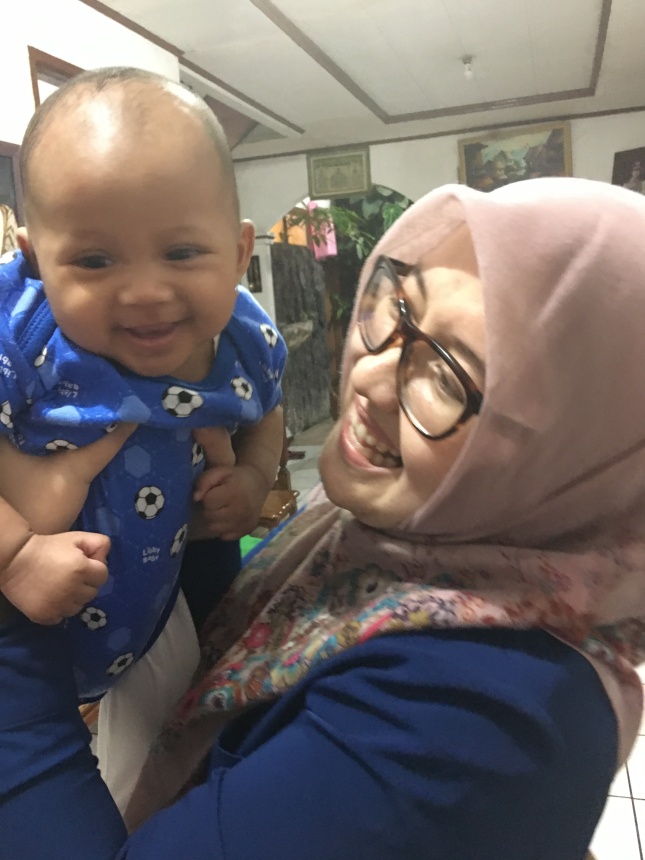
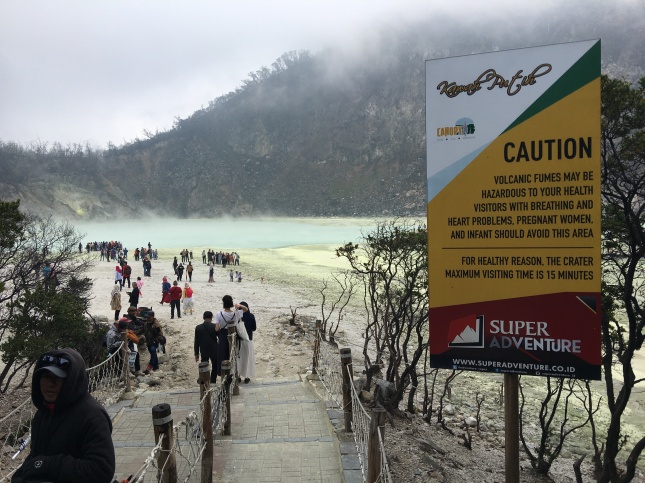
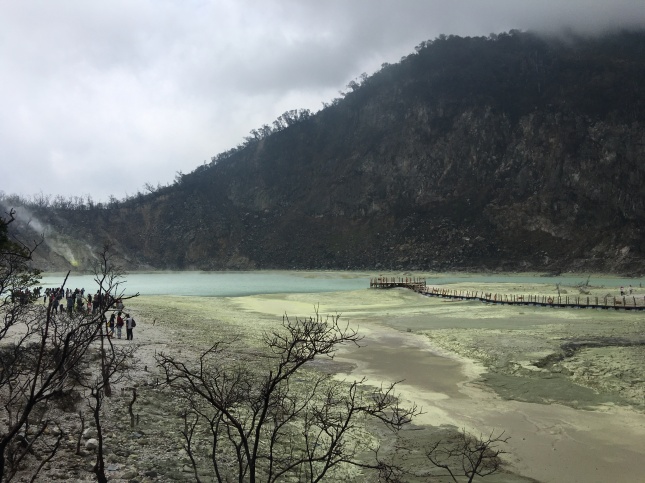


 Our day then finished with a trip to a quirky yet beautiful coffee place on the side of a mountain. It was new for Bu May too! Here we enjoyed a cup of coffee or tea with freshly cooked pisang goreng (fried banana) topped with brown sugar and cheese! Cheese is still incredibly popular as a topping for just about any dish, sweet or savoury! The garden here was full of the most gorgeously coloured flowers .
Our day then finished with a trip to a quirky yet beautiful coffee place on the side of a mountain. It was new for Bu May too! Here we enjoyed a cup of coffee or tea with freshly cooked pisang goreng (fried banana) topped with brown sugar and cheese! Cheese is still incredibly popular as a topping for just about any dish, sweet or savoury! The garden here was full of the most gorgeously coloured flowers .



 The school is set on just over 10 hectare (25 acres) and resembles a botanical garden more than a school!! Close to the newly built school buildings are fields for growing crops including edamame, chilli, dragon fruit, orchids, spring onion, corn, eggplant and kangkung.
The school is set on just over 10 hectare (25 acres) and resembles a botanical garden more than a school!! Close to the newly built school buildings are fields for growing crops including edamame, chilli, dragon fruit, orchids, spring onion, corn, eggplant and kangkung.  Paths leading around the site are lined with enormous established trees, many of which are rare.
Paths leading around the site are lined with enormous established trees, many of which are rare. 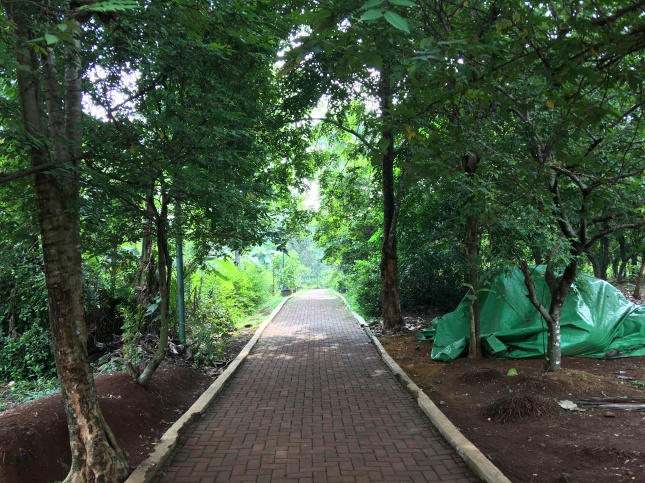 It was just lovely walking around talking to the gardening staff there while admiring the rambutan and jackfruit hanging off the trees.
It was just lovely walking around talking to the gardening staff there while admiring the rambutan and jackfruit hanging off the trees. 
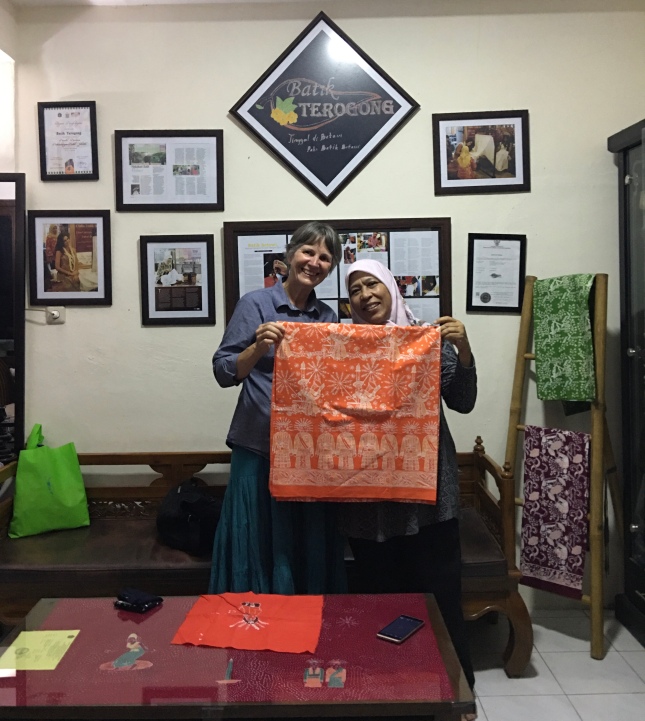



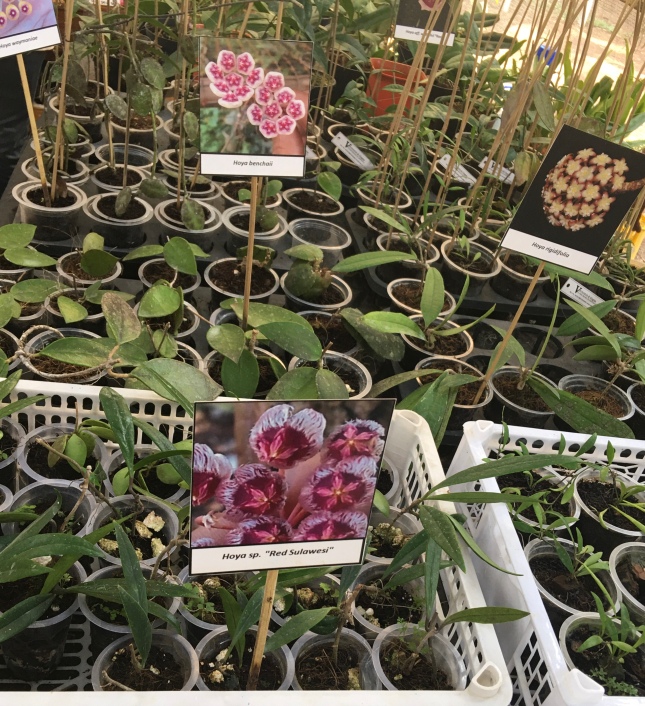
 I particularly liked this creative yet unusual representation of a goat. Wonder how long it could withstand Australian climatic conditions?
I particularly liked this creative yet unusual representation of a goat. Wonder how long it could withstand Australian climatic conditions?